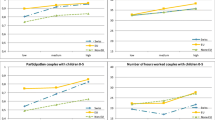Abstract.
Part-time work whilst still in full-time education is common in many industrialized countries, and teenagers constitute a significant component of the work force in some sectors of the labour market. In Britain, in the early 1990‘s, some 60% of 16–18 year olds still in full time education also worked part-time. Although the determinants of teenager participation in the labour market have been studied previously (both in the United States and the United Kingdom), there remain a number of neglected questions. We address some of these in this paper, basing our analysis on data taken from the UK National Child Development Study. We first examine how teenagers divide their time between working and studying. We further analyse what explains teenage wages and labour supply. We utilise a rich set of variables describing parental background, as well as parents‘ labour force status and draw on information on physical stature to explain variations in wages.
JEL classification: I20, J20, J31
Similar content being viewed by others
Author information
Authors and Affiliations
Additional information
Received March 26, 1996/Accepted May 16, 1997
Rights and permissions
About this article
Cite this article
Dustmann, C., Rajah, N. & Smith, S. Teenage truancy, part-time working and wages. J Popul Econ 10, 425–442 (1997). https://doi.org/10.1007/s001480050052
Issue Date:
DOI: https://doi.org/10.1007/s001480050052




